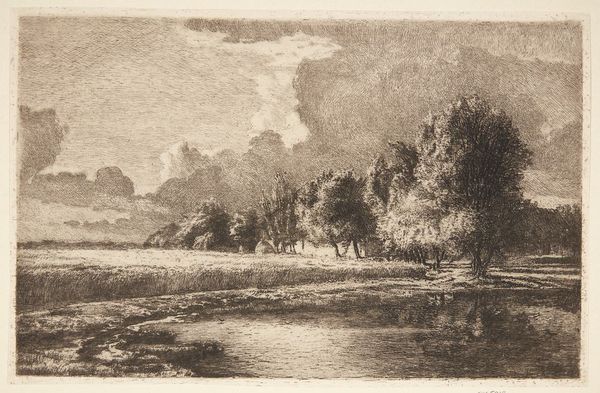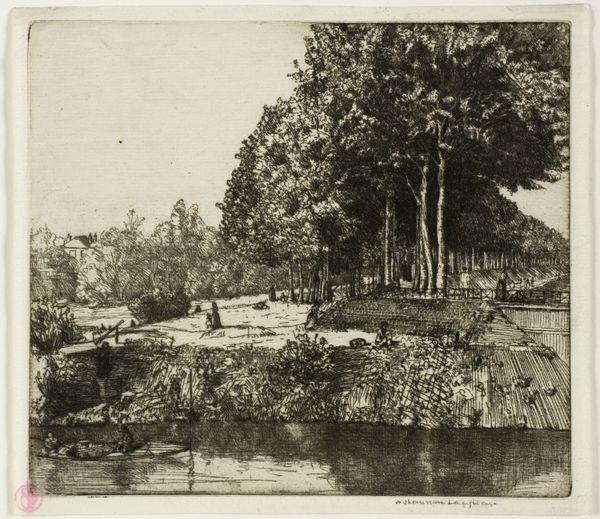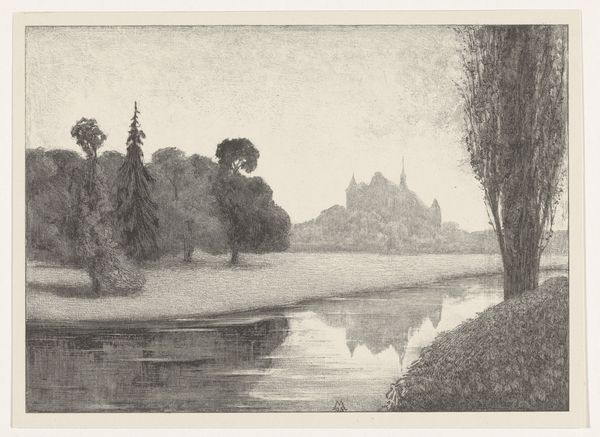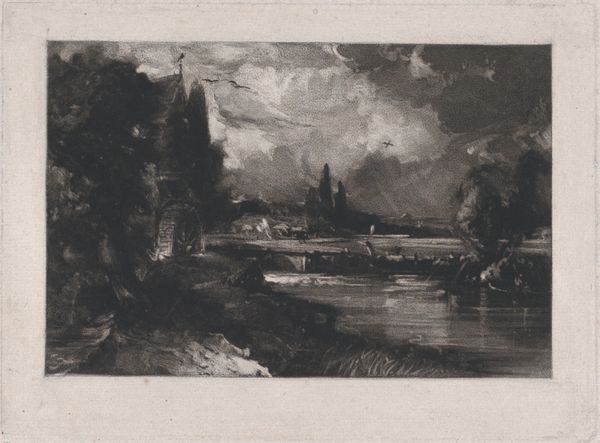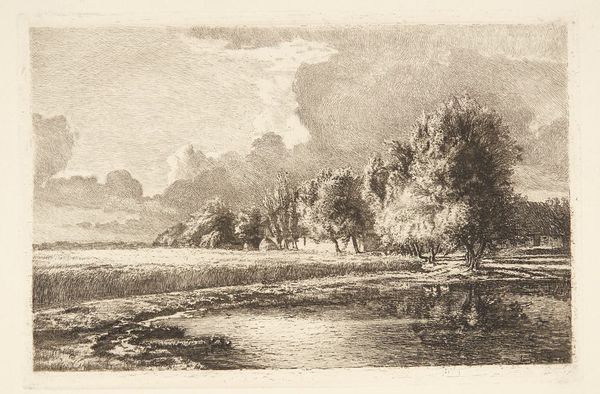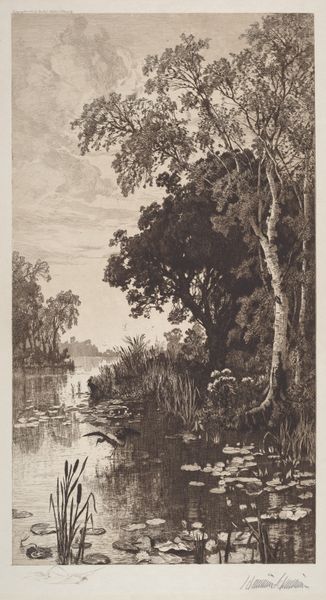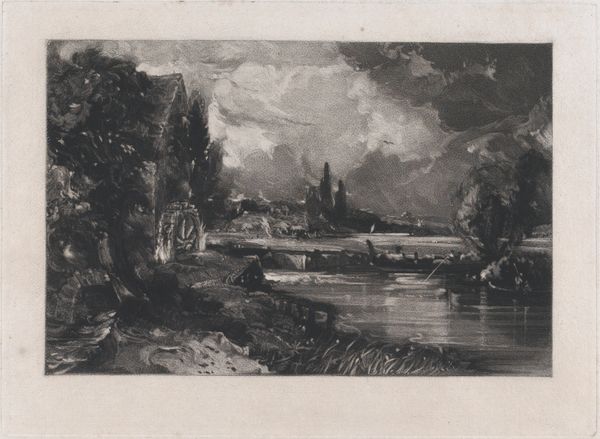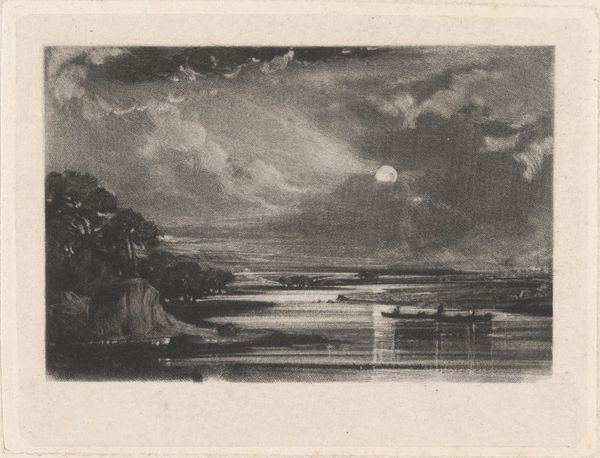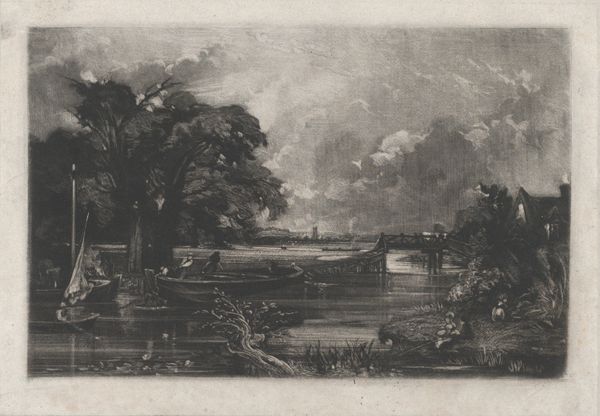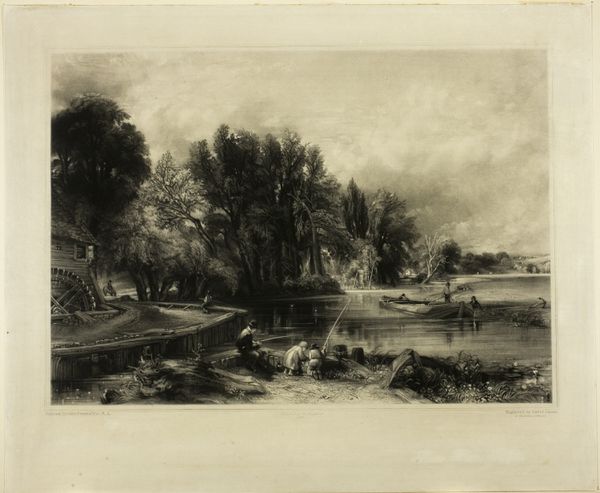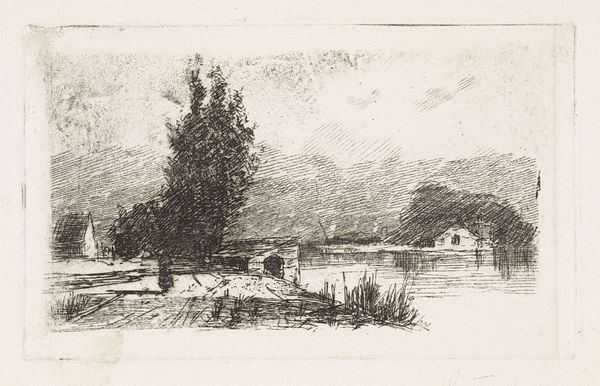
drawing, print, paper, charcoal
#
drawing
# print
#
landscape
#
charcoal drawing
#
paper
#
romanticism
#
charcoal
#
charcoal
Dimensions: 176 × 222 mm (plate); 305 × 465 mm (sheet)
Copyright: Public Domain
Editor: This is David Lucas’s "Mill Stream" from 1831. It's a charcoal drawing printed on paper. There's almost a dreamlike quality to the way the landscape is rendered in such hazy detail. How should we understand this particular style of landscape? Curator: Looking at "Mill Stream", we can see how it embodies the Romantic era’s shift toward idealizing nature and the past. Instead of documenting reality, artists were interested in conveying feeling. Notice the dark, brooding sky, typical of the sublime, and the way the mill is integrated, but dominated, by the natural landscape. How does this romanticized vision serve a social purpose, do you think? Editor: Perhaps it speaks to an idealized past, removed from industrialization? The figures appear harmonious with the scenery. Is this artwork in conversation with particular sociopolitical tensions of the time? Curator: Absolutely. During the early 19th century, England was undergoing rapid industrialization. Picturesque scenes, like "Mill Stream," tapped into nostalgia for a pre-industrial, rural England, and a perceived simpler way of life. There's often an element of social commentary embedded within these landscapes; consider who could afford to enjoy such a scene and who benefited from its idealized portrayal. It makes you wonder about the role of art in constructing these narratives. Editor: So, the appeal isn't purely aesthetic; it's deeply intertwined with the politics of the period. That changes how I view the artwork. Thank you! Curator: Indeed! Recognizing the context behind the imagery makes our understanding more complex.
Comments
No comments
Be the first to comment and join the conversation on the ultimate creative platform.
